May 8, 1888
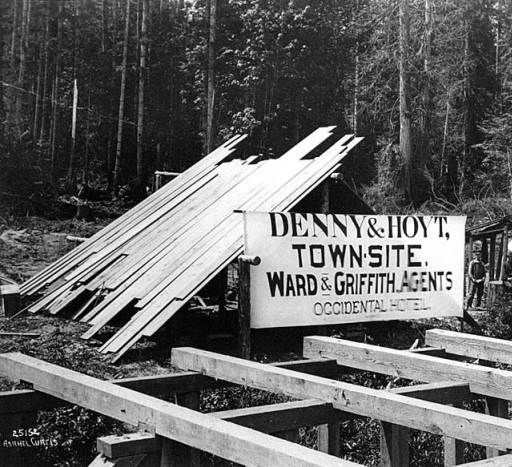
Founding of Fremont
On this date, the plat for Denny & Hoyt's Addition to the City of Seattle was filed in King County, Washington Territory.
Read more »A group of investors bought a vacant plot of land at the northwest corner of Lake Union in Seattle. The principal investors Edward and Carrie Blewett from Fremont, Nebraska, named the new suburb Fremont. The plat name of Denny and Hoyt’s honored the banking firm which facilitated the purchase, and the Ward and Griffith realtors advertised and sold lots in the new development.
Although the street names were different in 1888, we know the plat today as the land from 3rd Avenue NW on the west to Albion Avenue N on the east. To the north, it reaches N. 39th Street. The plat extends to Florentia Street (on the north side of Queen Anne) to the south.
Photo of the 1888 real estate sign is courtesy of the University of Washington Special Collections of photographer Asahel Curtis item #482.
February 1, 1893
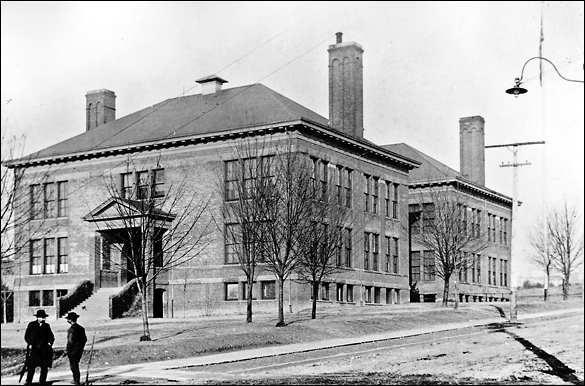
Fremont’s BF Day School
Fremont’s BF Day School predates the public school system!
Read more »BF Day School is named after the donor Benjamin Franklin Day after he paid for the first three months of rent. Opened in 1893 this school is the longest operating public school in Seattle and has been educating our youth for 125 years, predating Seattle’s public school system. The building is a designated historic landmark and undergone state-of-the-art renovations. Since 2009 it has the largest rain garden in Seattle Public Schools. The Fremont Chamber of Commerce partners with BF Day for annual fundraising events and has a lifetime membership for all their great community work. Learn more about the School and read more from fremocentrist.com and History.org
November 1, 1899
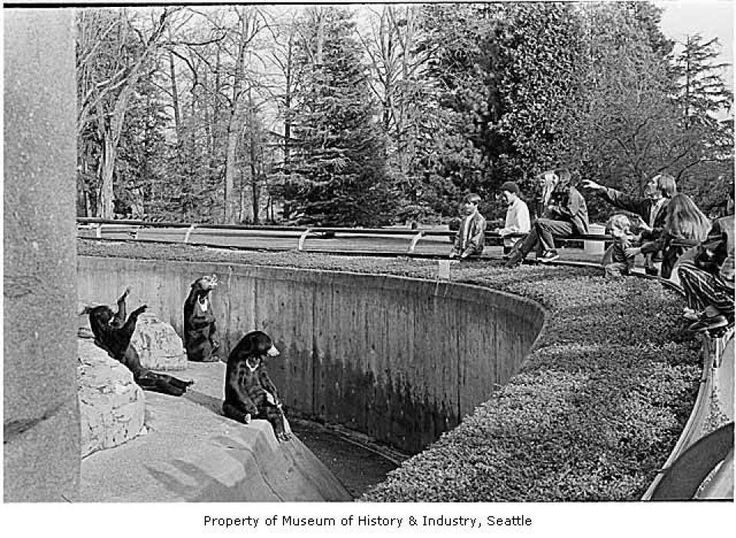
Woodland Park Zoo
Founded in 1899, Woodland Park Zoo has sparked delight, discovery and unforgettable memories for generations of Northwest families.
Read more »Those who experience the wonders of the natural world are inspired to protect it. That’s why every year we lead more than 1 million people on a journey that inspires a lifelong love of animals, makes science come alive, and gives people the tools to take conservation action. (Woodland Park Zoo)
March 13, 1914
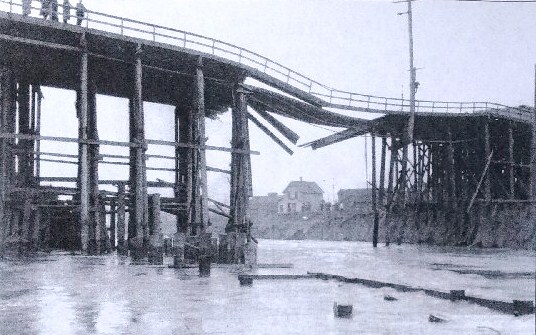
Dam break washes out the Fremont trestle bridge
The dam which held back the waters of Lake Union broke and a wall of water tore out the trestle bridge at Fremont.
Read more »During the digging and construction of the Lake Washington Ship Canal at Fremont, a temporary trestle bridge was opened in 1912 for pedestrians and other traffic. Also to support the canal project, a timber dam was built to hold back the waters of Lake Union were held back from the construction area. The damage to the trestle bridge when the dam broke was repaired and it reopened within three weeks. Sources: HistoryLink Essay 20374. Photo courtesy of Seattle Daily Times, March 14, 1914, pages 1, 5, and 12.
January 1, 1917

Lake Washington Ship Canal
As the Native travelers illustrated, connecting saltwater and freshwater made sense, except for one large problem.
Read more »June 15, 1917
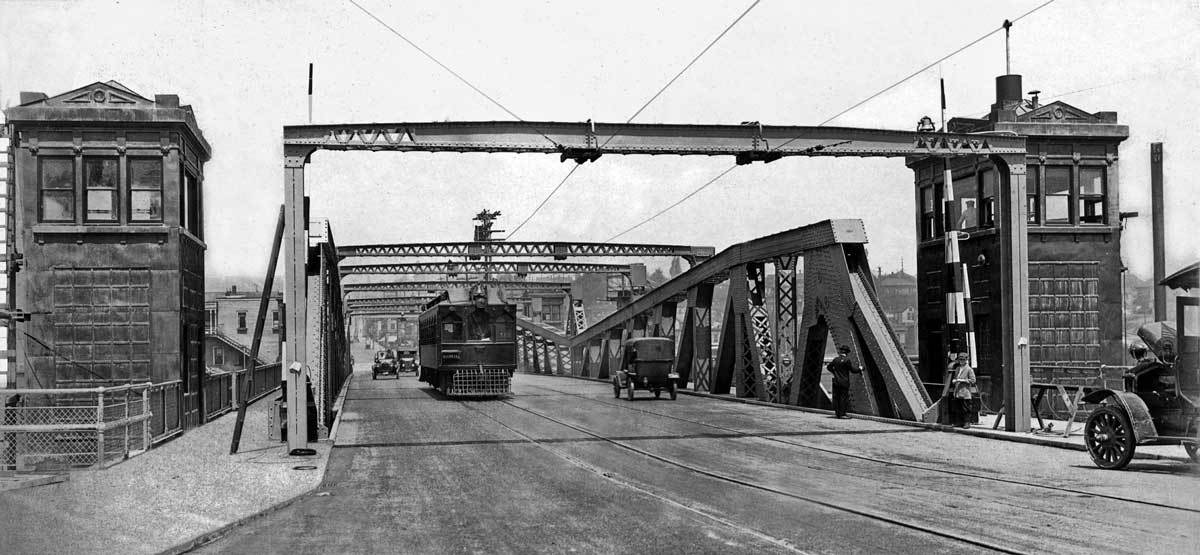
Fremont Bridge opens to traffic
The double-leaf bascule drawbridge spans the Lake Washington Ship Canal and links the neighborhoods of Fremont and Queen Anne. It opened to traffic on this date.
Read more »The construction of the current Fremont Bridge was necessitated by the construction of the Lake Washington Ship Canal which linked Lake Washington and Lake Union to Puget Sound. The bridge needed to be high enough to accommodate ocean-going vessels passing through the canal. Because naval vessels would be using the canal, the U.S. War Department required that the bridge be 30 feet above water and include a draw that would give a 150-foot opening. The ceremonial opening of the Lake Washington Ship Canal and boat parade was on July 4, 1917.
October 25, 1985
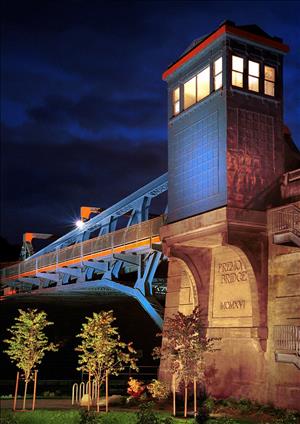
Dedication of the Blue and Orange Paint Job on the Fremont Bridge
After over a year of voting and meetings and compromise, the painting of the Fremont Bridge was completed, with blue as its predominant color and orange accents.
Read more »The Fremont Bridge was painted a dull green for decades. In 1972, the Fremont Improvement Committee picked a new color, Fremont Orange. The residents agreed and the City Engineering Department painted it bright orange. However, over time it faded to a color described as pink, dull coral, or “between dead salmon and stale fruit.”
In 1984, the Engineering Department was concerned about re-painting it orange. They offered options of other colors and asked people at the Fremont Street Fair to vote. Fremont mayor Armen Stepanian campaigned for orange as a write-in candidate, but Canal Blue won, and the painting was scheduled for 1985.
The Fremont neighborhood was still unsettled about the color. They didn’t like that the color orange was not on the ballot the year before, and there were questions about whether chemical properties of the orange paint made it unsuitable for use on a bridge. Beginning in May 1985, Clayton Park, editor of the local newspaper, The Forum, wrote about the issues of orange vs. blue and conducted a poll of the paper’s readers. The following months saw letter writing campaigns and meetings with Fremont residents, merchants, and the Engineering Department. On August 8, a compromise was reached, and the painting began. The predominant color would be blue with structural features highlighted in orange. Fremont Arts Council chairwoman Irene Ingalls created the paint design along with Tom Gorton and other neighborhood artists.
On October 25, 1985, Fremont Neighborhood Council president Liz White, Fremont Chamber of Commerce president Jim Daly, Bridge Maintenance Manager Bill Couch, and over 50 local residents met at the newly painted bridge to dedicate “the paint of compromise.”
